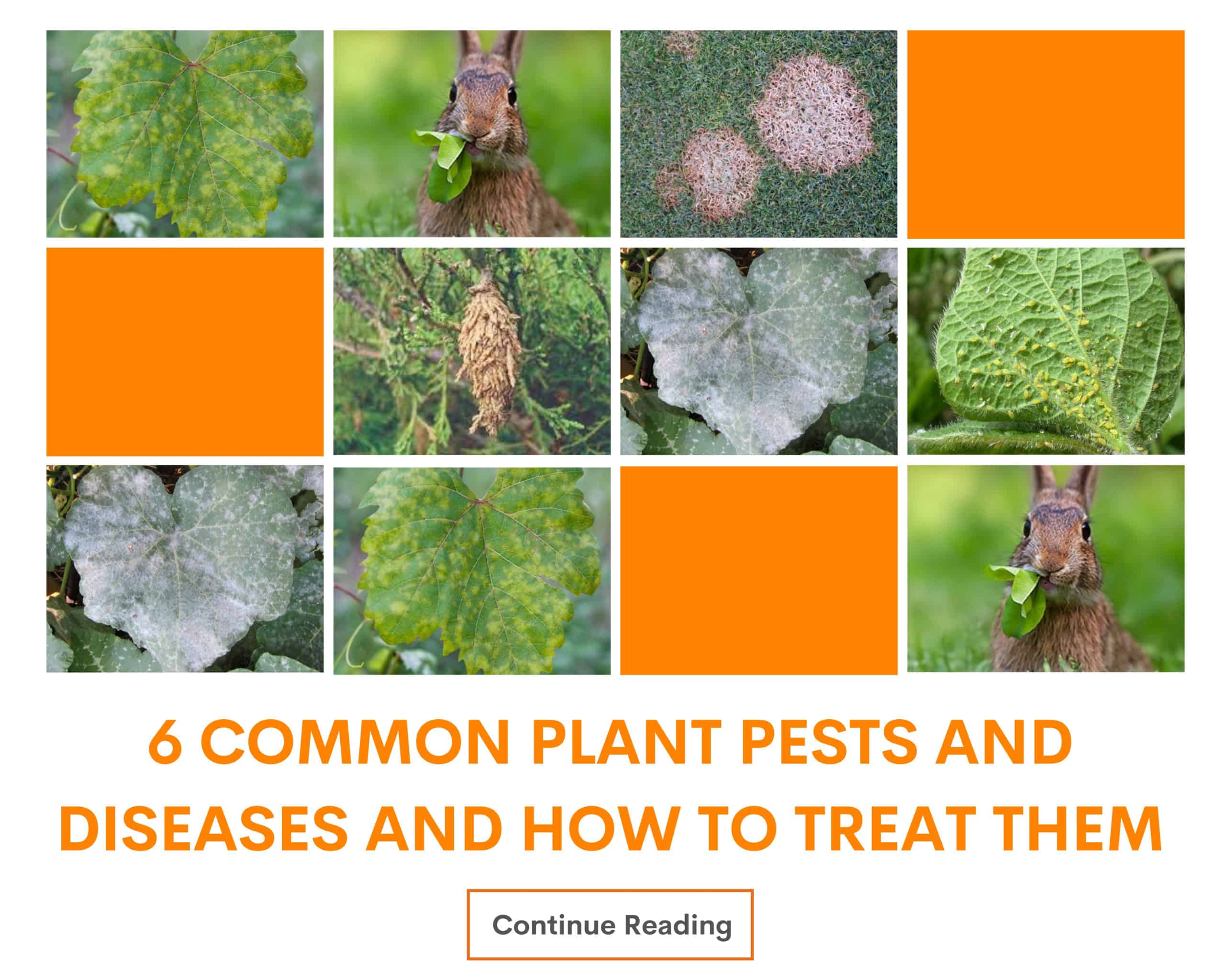
21 Jun Six common plant pests and diseases
As June temps rise, it has us feeling HOT, HOT, HOT! Summer weather in Nebraska has us experiencing a range of high heat, humidity, heavy rain, and dry spells. These environmental conditions can take a toll on plant health and expose them to different pests and diseases. Even a well-maintained property can still experience issues with various common plant pests and diseases. So join us as we check our plants for a few common plant pests and diseases.
1: Powdery Mildew – Powdery mildew is a fast-spreading disease and leaves a telltale white dusty coating on leaves, stems, and flowers. Caused by a fungus and appears mid to late during the growing season. It affects several plants, including lilacs, dogwoods, rhododendrons, apples, grapes, cucumbers, squash, pumpkin leaves, daisies, and roses.
You can prevent powdery mildew by doing any or all of the following:
- Don’t place plants too close together.
- Rake up infected leaves to reduce the spread of spores and destroy them.
- Make sure plants have good drainage and ample air circulation.
- Avoid watering from overhead and try to water in the morning to allow foliage to dry before evening.
2: Downy Mildew – Downy Mildew appears as a yellow to a patchy white pattern on the top surface of older leaves of the affected plants, while the bottoms develop white or gray mold. Downy mildew occurs in cooler weather, usually in early spring or late fall when temperatures are cooler than 65˚F. It affects many ornamentals and edible plants, such as impatiens, pansies, columbine, lettuce, broccoli, and cauliflower.
You can prevent downy mildew by doing the following:
- Prune or stake plants and remove any weeds to improve air circulation.
- Don’t place plants too close together.
- Keep the ground under the infected plants clean during the fall and winter to prevent the disease from spreading.
- Avoid overhead watering and try to water in the morning to allow foliage to dry before evening.
- Remove and destroy any plants with a severe infection
- Choose resistant varieties whenever possible.
3: Snow Mold – Snow mold is a type of fungus that damages turf. It flourishes in cold, moist conditions in the latter part of winter as the snow melts. Light tan to pinkish areas of matted grass appears caused by threads of mold.
You can prevent snow mold by doing the following:
- Rake up any matted grass to break up the threads of mold and allow for better airflow.
- In the fall, cut grass shorter to discourage tall grass blades from falling over and contributing to matted grass.
- A nitrogen fertilizer is excellent for fast greening in the spring, but too much can invite snow mold.
4: Aphids – Aphids are small, soft-bodied green or yellow bugs that live on the leaves and stems of plants.
They feed off of the nutrient-rich liquids from plants.
You can prevent aphids by doing the following:
- Wipe plants with soapy water or rubbing alcohol.
- Don’t over-fertilize your plants
- Plant onions as a natural preventative.
5: Bagworms – Bagworm larvae grows and feeds on trees, causing plant damage. These pests can be costly to landscaping plants but do not pose a threat to humans. However, large infestations of these pests may damage or cause trees and shrubs to die from defoliation. Bagworms are more likely to be a problem in urban areas where host plants are commonly planted together. The most significant sign of infestation includes egg sacs hanging from trees. These infestations generally go undetected until considerable plant defoliation occurs or a large number of bags become noticeable.
These pests feed on plant needles or leaves from different types of trees, including:
- Arborvitae
- Cedar
- Deciduous
- Juniper
- Pine
- Spruce
You can prevent bagworms by doing the following:
- Cut off any visible bagworms sacks
- Spray affected plants with insecticides.
6: Rabbits: As cute as they are, the saying is true! They multiply like rabbits, and there is always more than one. Rabbits can do significant damage to a garden area in one day. Rabbits do the majority of their feeding in the evening and overnight. While some plants rabbits don’t particularly like, they will eat anything if they get hungry enough. Rabbits are somewhat picky eaters, especially about a scent, so repellents can be an effective option.
You can prevent rabbits by doing the following:
- Put down a rabbit repellent. Most repellents are going to need to be applied repeatedly throughout the growing season. Most will need to be reapplied after a rain and following a good amount of new plant growth.
- Natural repellents like blood meal, human or dog hair, vinegar, cayenne pepper, and cinnamon can be effective.
While we provided you with some natural, at-home remedies to help you treat plant pests and diseases, you are not alone in this battle. We have excellent bed maintenance programs that can help you maintain a happy, healthy garden. Give us a call today or click HERE to read more about our bed maintenance services.


